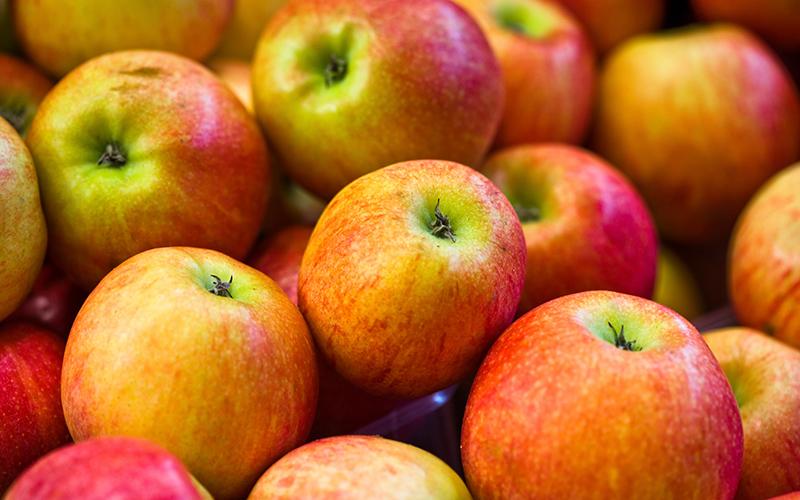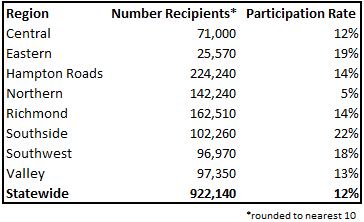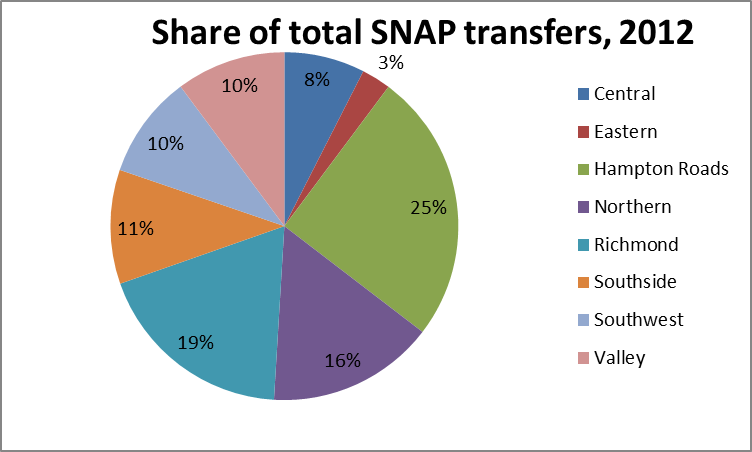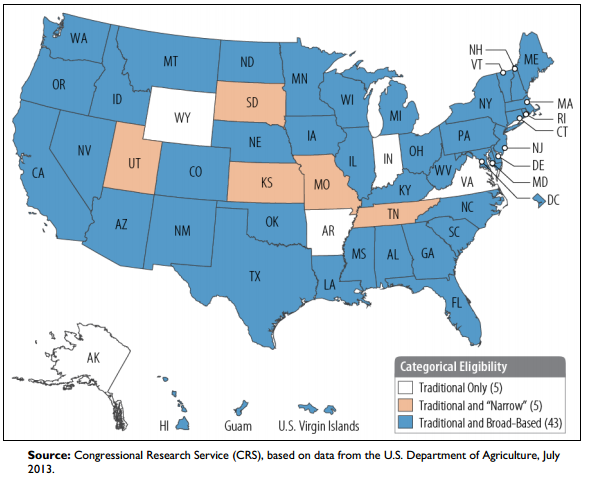SNAP in Virginia

An average of 922,150 Virginians– 11.6% of all Commonwealth residents– participated in the Supplemental Nutrition Assistance Program (SNAP) each month between January and December 2012.
This social safety net program has received particular attention in recent months. Not only has SNAP funding recently been reduced due to the expiration of the American Recovery and Reinvestment Act (ARRA), but the soon-to-be-passed Farm Bill will likely implement additional cuts. What does SNAP look like in Virginia, and in what ways might recent and impending changes affect the Commonwealth?
SNAP in Virginia
SNAP allows recipients to use dedicated monthly subsidies to purchase food with an electronic benefit transfer (EBT) card. As participants once used slips of paper known as food stamps, the program is still informally referred to as the Food Stamp Program. Eligibility is established through low income, though some exceptions are made for disability or age.
Participation rate varies across Virginia, with participation generally higher among those localities the greatest distance from the Washington D.C. metro area.

Among Virginia’s eight regions, only Northern Virginia has a lower participation rate than the Commonwealth average. The participation rate in Southside is nearly double that of Virginia overall.

However, examining the share of total funding to each region of the Commonwealth adds nuance to our understanding of SNAP in Virginia by revealing where recipients are concentrated.

Because of Northern Virginia’s high population concentration, NoVa received nearly one-sixth of all 2012 SNAP transfers; in contrast, the less-densely-populated Southside received one-tenth. Eastern Virginia, with its small population, received about 3% of all SNAP transfers.
Loss of American Recovery and Reinvestment Act Funding
With the November 1, 2013 expiration of the ARRA funding for SNAP, benefits were reduced for all recipients. ARRA monies, often referred to as stimulus funds, had supplemented base levels of Federal SNAP funds since 2009.
It is estimated that Virginia will lose approximately $99 million of SNAP funding in fiscal year 2014, which officially began in October 2013. This represents a nominal decrease of nearly 7% from FY2013 funds.
Think of it like this: In October 2013, the first month of fiscal year 2014 but before stimulus funds expired, a family of 4 receiving the maximum SNAP benefit would have received about $668. The same family will receive $632 this month. This loss of $36 might be felt in a variety of ways– given that each member of this family gets a little over $5 per day in food stamps, $36 might mean several lost meals.
The Farm Bill*
It is suspected that, once authorized, the Farm Bill will include changes to so-called “broad based” categorical eligibility for SNAP. In general, traditional categorical eligibility permits states to confer SNAP eligibility on any individual already receiving Supplemental Security Income, or benefits from Temporary Assistance for Needy Families (TANF) or General Assistance.
Categorical eligibility is considered “broad-based” when receipt of benefits in addition to those above allow an individual to be eligible for SNAP. Changes limiting broad categorical eligibility will not affect the Commonwealth, as it is one of five states that implements traditional categorical eligibility.

Additionally, there are many states that provide households with small levels of energy assistance from the Low-Income Home Energy Assistance Program (LIHEAP) so that they will be eligible for higher SNAP benefits than they might otherwise be. Specifically, households receiving any LIHEAP funds, even $1, qualify for an automatic housing and utilities deduction from their gross income. The calculated net income of households receiving this automatic deduction may be lower than if it reflected these households’ actual housing and utilities costs. This lower net income permits such households higher SNAP benefits.
Possible changes to the Farm Bill would increase the minimum LIHEAP benefit value that would make a household eligible for these increased SNAP. This is intended to encourage these states to reduce the number of LIHEAP recipients and, therefore, reduce SNAP benefits for those who currently qualify under this “heat and eat” form of benefits allocation*. Again, because Virginia does allocate LIHEAP funds in this way, changes to this aspect of SNAP benefits allocation would not effect the Commonwealth.
More information
The majority of Virginia’s SNAP recipients come from households in which at least one person is employed; this illustrates that SNAP does, in fact, play a supplemental, not replacement, role in putting food on the table for many Virginians. With one in ten Commonwealth residents receiving benefits, this program plays a critical role in Virginia’s social safety net. For more information, please refer to the most recent of our Census Brief series: Supplemental Nutrition Assistance Program in Virginia.
February 25: This section was edited to correct and clarify the information on heat-and-eat benefits allocation.


